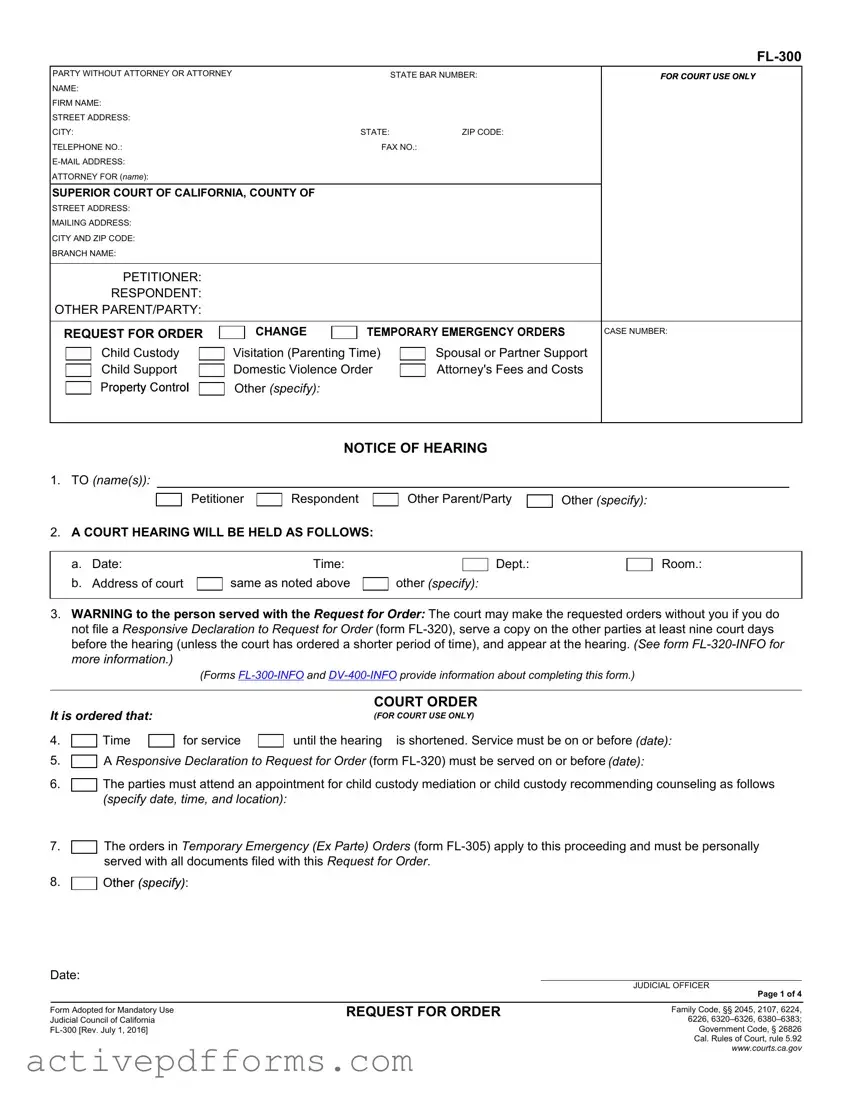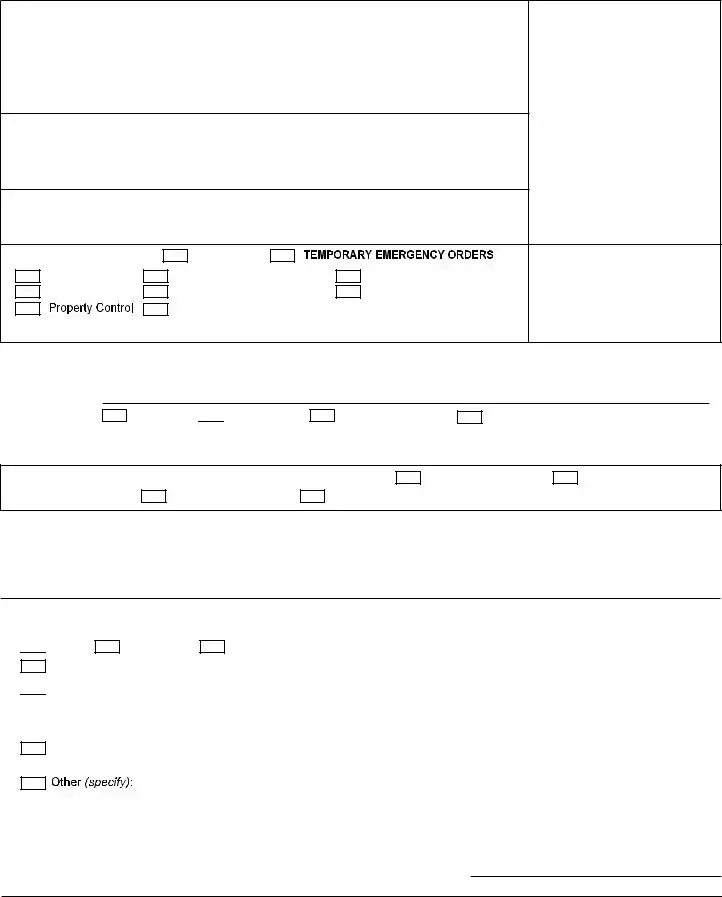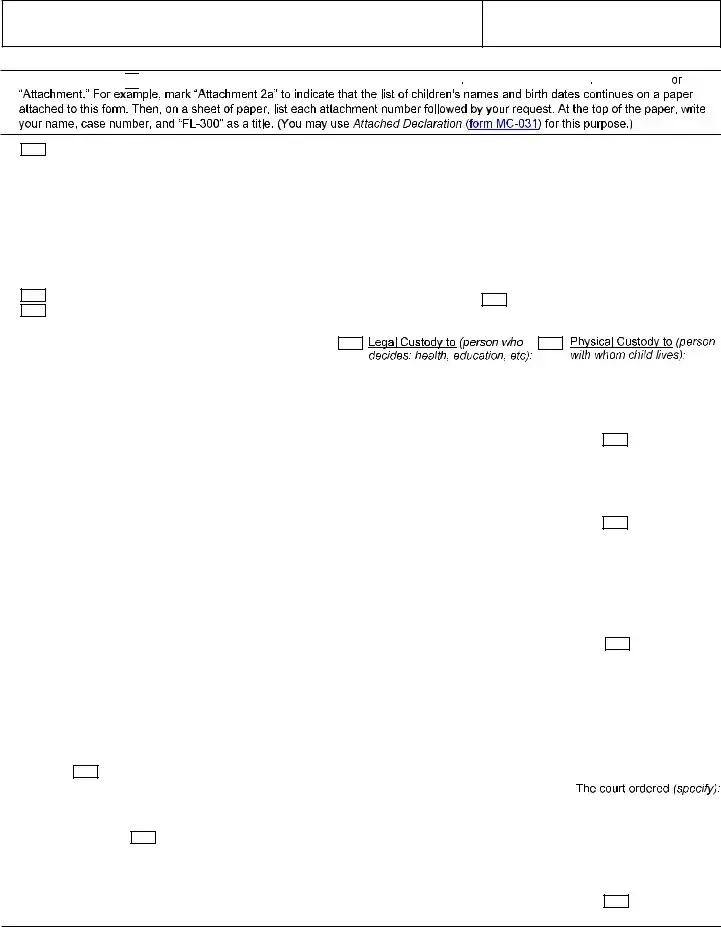The FL-300 form, an essential document within California's family law proceedings, facilitates a broad array of requests to the court, highlighting its crucial role in modifying family dynamics legally. It encompasses requests for changes in child custody, visitation rights, spousal or partner support, child support, domestic violence orders, attorney's fees and costs, among other specifications. Such versatility underscores the form’s importance for parties seeking to alter existing orders or establish new ones. The form mandates detailed information from the applicant, ensuring the court has a comprehensive overview of the requested changes or new orders, which significantly impacts children’s wellbeing and family structure. Notably, the FL-300 form necessitates procedural compliance, such as timely service to the other party and attending mandated mediation sessions, critical steps for ensuring fair consideration of the requests. Further, it integrates warnings and instructions for respondents, emphasizing the repercussions of non-participation, such as the court proceeding in their absence, a testament to the judiciary's commitment to due process. The FL-300 effectively bridges individuals’ legal intentions with the judiciary's structured processes, embodying a vital procedural step in navigating California's family law system.



 Respondent
Respondent Time
Time The parties must attend an appointment for child custody mediation or child custody recommending counseling as follows (specify date, time, and location):
The parties must attend an appointment for child custody mediation or child custody recommending counseling as follows (specify date, time, and location):























































 petitioner
petitioner  respondent
respondent  other parent/party
other parent/party
 own or are buying
own or are buying I request temporary emergency orders be given exclusive temporary use, possession, and
I request temporary emergency orders be given exclusive temporary use, possession, and
 This is a change from the current order for property control filed on (date):
This is a change from the current order for property control filed on (date):